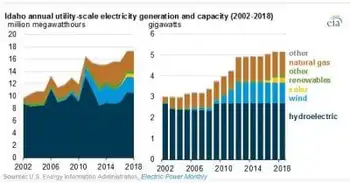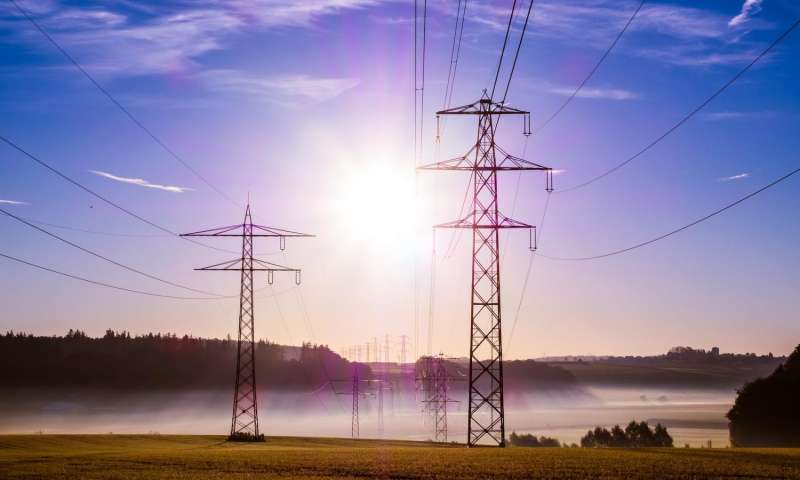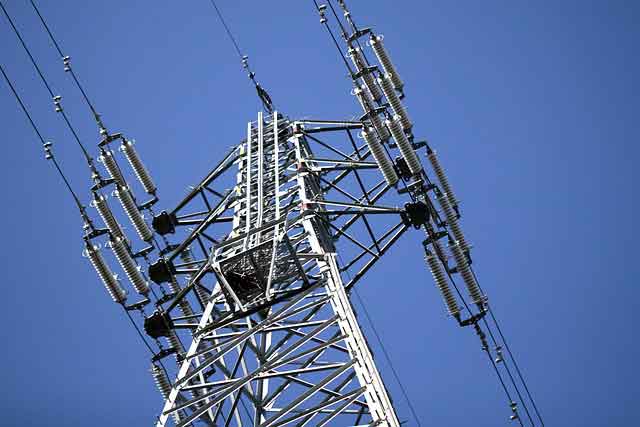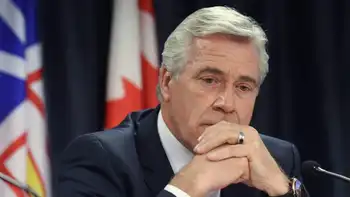Key Kansas lawmakers upset over power line dispute
By Associated Press
NFPA 70e Training - Arc Flash
Our customized live online or in‑person group training can be delivered to your staff at your location.

- Live Online
- 6 hours Instructor-led
- Group Training Available
The Republican chairmen and ranking Democrats on the House and Senate utilities committees said that they're worried such a delay will prevent the development of wind farms.
"We're going to have to try to figure out some kind of way to speed up the time," said Rep. Annie Kuether, of Topeka, the ranking Democrat on the House committee.
The new lines could carry up to six times as much electricity as the biggest existing lines in the region. They could move large volumes of power from wind farms to consumers and help meet a growing demand for electricity.
Both companies have applications before the Kansas Corporation Commission, which regulates utilities. Both propose routes across southern Kansas, at a cost of $2.2 million per mile.
One applicant is ITC Great Plains, a Topeka-based subsidiary of a Detroit-area transmission company. The other involves Topeka-based Westar Energy Inc., the state's largest electric utility; an Ohio energy company and an Iowa firm with ties to billionaire investor Warren Buffett.
Senate committee Chairman Jay Emler, of Lindsborg, said he and others want to pursue a bill giving the KCC eight months to rule on future requests to build such power lines. He said lawmakers also could consider a measure to force a quicker decision in the ITC-Prairie Wind contest.
"We don't want to see another year's worth of delays," Emler said. "We're not trying to make the decision for them. We just think it needs to be made more expeditiously."
The commission said it would decide by June 2009 whether ITC and Prairie Wind Transmission, the partnership involving Westar, are qualified to build their proposed lines. Then, in December 2009, the commission would pick of the proposals.
In outlining its schedule, the KCC said the successful company could spend as much as $600 million. Costs could be passed along to ratepayers in seven states, including Kansas, and the KCC said it would not "rubber stamp" an application before considering how consumers would be affected.
Commission Chairman Tom Wright also urged the two applicants to draft a joint, compromise plan, saying having the KCC pick one over the other could lead to court battles and ongoing questions.
Nicole Corcoran, a spokeswoman for Gov. Kathleen Sebelius, who appointed the commission's three members, said: "We support the efforts of the KCC and respect their approach on the timeline."
And David Springe, chief attorney for a state board representing residential utility customers and small businesses, questioned whether the legislators are being realistic. Springe said there are no laws or court precedents to guide the KCC, leaving it to set standards for choosing an applicant.
"We have no framework at all to ask the question, 'who can build them cheaper?'" Springe said.
ITC had hoped to have its lines up in 2011, and Prairie Wind plans to have its lines built by 2013.
The legislators said there's urgency to getting the new lines up because of the potential for developing wind farms, particularly in southwest Kansas. They said other states, particularly Oklahoma, are moving ahead aggressively with wind energy.
"If this thing gets delayed, the wind generation will be built in Oklahoma, not in Kansas," said Rep. Carl Dean Holmes, of Liberal, the House committee's chairman. "Without transmission lines, you can't move the energy."
ITC Great Plains is a subsidiary of ITC Holdings Corp., of Novi, Mich. It has transmission lines mostly in Michigan but also in Illinois, Iowa, Minnesota and Missouri.
Its V-shaped route is 180 miles. It would drop from the Wichita area, through Medicine Lodge to the Kansas-Oklahoma border, then run up to the Dodge City area.
Prairie Wind's rival project would have a 230-mile, Y-shaped track. The first part would be from Wichita to Medicine Lodge. From there, separate legs would go to the border and to Dodge City.
In Prairie Wind, Westar is involved with subsidiaries of American Electric Power, of Columbus, Ohio, and MidAmerican Energy Holdings Co., of Des Moines, Iowa. Buffett is a MidAmerican director, and his Berkshire Hathaway Inc. is MidAmerican's majority owner.
Sen. Janis Lee, of Kensington, the ranking Democrat on the Senate panel, said the KCC's decision is taking "far too long."
"It's going to put the development of wind generation in western Kansas at risk," she said. "I'm afraid that other states will move ahead of us."











